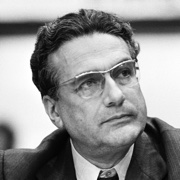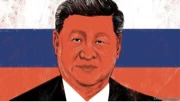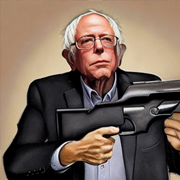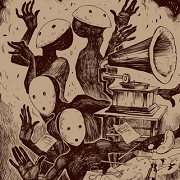- Some Guy TT
- Aug 30, 2011
-
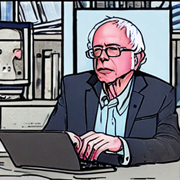
|
Twenty days before Russia launched its invasion of Ukraine in February 2022, Chinese president Xi Jinping signed a remarkable joint statement with Vladimir Putin, which proclaimed that there were “no limits to Sino-Russian cooperation…no forbidden zones.” When Russian tanks began rolling through Ukrainian territory, China was at pains to signal that it had received no advance word about Moscow’s offensive, and it has sought ever since to avoid displaying any outright allegiance to the war aims of its no-limits friend. This has required Beijing to constantly, awkwardly evade stating its position on an attack that clearly violated international law and that has damaged China’s security interests by weakening its authoritarian partner, Russia, while drawing Europe and the United States dramatically closer together.
Xi’s characterization of a friendship without forbidden zones looks like a miscalculation, but it was surely the result of careful geopolitical deliberation. His strongly assertive rule since 2013, as well as China’s increasingly aggressive foreign policy since at least the Western financial crisis of 2007–2008, have been premised on the belief that the United States is in steep and probably irreversible decline as a global power, and that it is therefore ripe for a challenge.
The last time Beijing placed a major bet on the prospect of US decline was a hugely significant turning point for both China and the world. American memories of the resumption of diplomatic contacts between Beijing and Washington in 1972 after a quarter-century without any are dominated by stories of Richard Nixon’s Machiavellian cleverness in sending Henry Kissinger to conduct secret talks with China’s top leaders. Their aim was to recruit the world’s most populous country into an opportunistic, tacit alliance against the Soviet Union, with which it had had a falling-out a decade earlier.
In seeking to partner with Washington, however, Beijing was following a different logic. As Frank Dikötter relates in China After Mao: The Rise of a Superpower, it believed that the US, bogged down badly in Vietnam, was doomed to decline. This made it less of a long-term challenger to China, which gave Beijing all the more reason to consider the Soviet Union its greatest threat. Just three years earlier the two countries had exchanged live fire in an ill-defined border area on the Ussuri River, with Moscow hinting at the possibility of a preemptive nuclear strike against China.
Like other authors of recent Western histories of this period, Dikötter attributes most of the early initiative in the reestablishment of diplomatic ties between Washington and Beijing to the Chinese, not to Nixon. Beijing’s preoccupation with Moscow did not fade quickly, either. Dikötter quotes one senior Chinese foreign policy official who said of the Soviets in 1977, “They are more imperialist than the worst imperialists.” As this view helps illustrate, the story of China in the post-Mao period—which came to be known as the era of reform and opening after long stretches of autarky and violent upheaval brought about by experiments varyingly aimed at producing socioeconomic egalitarianism and rapid economic growth—is as given to mythmaking by Chinese propagandists as it was to Westerners.
In condensed form, the more or less standard Western account of this era goes something like this. When Mao succumbed from a reported combination of Parkinson’s and Lou Gehrig’s diseases in 1976, after forty-three years of rule during which his supreme authority was seldom seriously challenged, China lucked out with the elevation of Deng Xiaoping, a talented capitalist reformer and putative moderate, as his successor. The high-growth years of the 1980s and 1990s under the serenely smiling Deng, familiar to Western audiences from multiple Time magazine covers, are usually recounted with an air of breezy predestination. As he pursued sensible policies, the down-to-earth Deng spouted now-famous aphorisms—such as “One crosses the river by feeling for the stones” and “It doesn’t matter if a cat is black or white, so long as it catches the mice”—that were meant to showcase his agreeable pragmatism.
Even better known was another statement attributed to Deng: “To get rich is glorious.” Could there be a pithier statement to capture the spirit of a time when China was blowing past one economic milestone after another? First, in places like Anhui and Sichuan Provinces, peasants were freed from the rigid collectivism of the Mao era and allowed to sell crops from their own plots. Next, industrial workers began to receive bonuses incentivizing individual effort, marking a break with the era of the so-called iron rice bowl, when everyone had the same low wages and subsisted on ration coupons.
Deng then welcomed foreign investment, carefully at first, in a few places like Shenzhen that were designated as “special economic zones” (SEZs), which were like rocket boosters for the country’s GDP growth. In short order Shenzhen went from an obscure fishing village to the country’s brightest economic success, growing at a 58 percent annual rate between 1980 and 1984. The SEZs churned out ever-larger quantities of textiles and light manufactured goods from children’s toys to simple electronics, and China’s exports increased fivefold between 1978 and 1988.
Next, Shanghai was redeveloped as a spectacular modern financial center and international showcase for the new China. In 2001 China joined the World Trade Organization, with American backing and enthusiasm from Western multinationals, and was well on its way to becoming a capitalist juggernaut.
The only hiccup—for that is how it is usually presented—was the mass student and worker protests centered on Beijing’s Tiananmen Square in 1989, which ended when the Chinese Communist Party (CCP) ordered a crackdown in which probably more than two thousand people were killed. But after a halfhearted quarantine by Western countries and a challenge by old-line conservatives within the CCP over his embrace of capitalism, the eighty-seven-year-old Deng toured China’s industrializing south in 1992 to reinvigorate his reforms, and within a couple of years the economy took off once again. This is often offered as proof of another aphorism attributed, wrongly, to Deng: “Practice is the sole criterion of truth”—in other words, it’s the results that count. And from that perspective, who could argue with the results, since after Mao’s death China shot from an average annual income of less than $200 per person to $12,000 today, with an economy that rivals that of the US in size?
Dikötter’s is one of a number of recent books arguing that this standard account of the post-Mao years gets a great many facts wrong. Getting them right is important not only for understanding that history but also for assessing a variety of intensely relevant contemporary concerns, from the sources of authority and the nature of politics in the CCP to how one might best understand Xi’s rule.
Two of these books, Dikötter’s China After Mao and Never Turn Back: China and the Forbidden History of the 1980s by Julian Gewirtz, reflect the complexity of such questions in how strongly they differ in their interpretations of this period. The focus of a third book, Overreach: How China Derailed Its Peaceful Rise by Susan Shirk, is much closer to the present, but the interpretational tensions that arise between Dikötter and Gewirtz on the one hand and the standard account on the other, as well as the different stresses offered by these two historians, further highlight the difficulties faced even by someone as deeply informed as Shirk in trying to assess today’s China. She is a longtime China scholar at the University of California at San Diego and a former deputy assistant secretary of state who first traveled to the country in 1971.
Both Dikötter and Gewirtz begin their accounts of the early post-Mao era with discussions of Hua Guofeng, a transitional figure who has been largely forgotten in China and receives little attention in the historiography of the period. While virtually on his deathbed, Mao banished Deng, who during his long career had risen to high positions in the party, been purged by Mao during the Cultural Revolution, and been brought back to power in 1974. Almost at the same time, Mao elevated Hua, hitherto a nearly powerless and undistinguished premier—head of the government—to the position of first vice-chairman of the CCP, making him Mao’s designated successor.
In both these books, as well as in a valuable new biography, “Avec toi au pouvoir, je suis tranquille”: Hua Guofeng (1921–2008) by the French historian Stéphane Malsagne, Hua comes across as an important reformist in the early post-Mao years, experimenting with the loosening of central economic controls and engaging with the capitalist world in order to position China for rapid economic growth. Deng usually receives sole credit for such things. Hua’s ambitions depended on the large-scale importation of Western industrial equipment, financed by borrowing from Western banks—China’s “foreign leap forward”—in order to jumpstart the country’s moribund socialist economy without radically overhauling its structure.
More interesting still is the depiction in both these books of the intense infighting at the highest level of Chinese politics. Mao’s death unleashed ambitions for power, and nearly all the major figures practiced vicious score-settling to obtain it, usually under cover of subterfuge. That is because virtually everyone, save perhaps the holdouts of the radicalism of the Cultural Revolution known as the Gang of Four, wanted to avoid a situation in which power would again be as highly concentrated as it had been under Mao.
It was Hua, ironically, who rehabilitated the banished Deng. But once he grasped Deng’s ambition, he quickly set out to discredit his more pedigreed rival as someone who had subverted the party’s authority during Mao’s final year of life by secretly promoting large demonstrations at Tiananmen to channel popular disgruntlement following the death of Mao’s longest-serving lieutenant, Zhou Enlai.
Deng quickly repaid his rival in the same coin, using well-placed surrogates to ridicule Hua as an empty suit for having used an ill-chosen slogan known as the “two whatevers” to bolster his legitimacy. The phrase was intended to signal that in leading the country Hua would make decisions on the basis of whatever he believed Mao would have done. The impression of being a shallow copycat was reinforced by his emulation of Mao’s language, dress, and even propaganda portraiture, all of which Hua, without a strong power base, believed would help establish his authority. He was happy to spread the story that a dying Mao had told him, “With you in charge, I am at ease” (from which Malsagne’s book takes its title), but he moved swiftly away from many of the central precepts of Maoism. For a country that was in a mood for a break with the traumas of the late Mao era, though, Hua’s choice of style proved a politically fatal mistake.
Deng, a clever opportunist, inveighed against “feudalism” in China, by which he meant leaders remaining in office for life, choosing their own successors, and engaging in the highly personalized style of rule practiced by Mao. Criticism like this unmistakably targeted Hua and further bolstered Deng’s chances at taking over. Even though Hua retained his titles, by the end of 1978 Deng was recognized as the de facto head of the CCP, an ascension that party propagandists trumpeted as the “Great Turning Point in History,” with China now embarked on the “correct path for socialist modernization.”
In plotting his rise, Deng had also tapped into the strong appetite for change he sensed in the country, and he encouraged talk about democracy, supporting a movement by citizens to post their thoughts about the need for reform in a part of Beijing known as Xidan, at what became known as Democracy Wall. The name derived from the fact that demonstrators were clamoring not only for what Deng and other party leaders said were the country’s four needed great modernizations to agriculture, industry, defense, and science, but also a fifth: democracy.
“Even if a few malcontents take advantage of democracy to make trouble…the thing to be feared most is silence,” Deng said of the demonstrations in early 1979. But by the end of the year, with moves afoot to relieve Hua of any residual power, Deng shut down Democracy Wall and clamped down on free expression. The best-known promoter of this fifth modernization was a young electrician and former Maoist Red Guard named Wei Jingsheng. As Gewirtz notes, Wei had written that Chinese people need “the kind of democracy enjoyed by people in European and American countries,” and this included “the power to replace their representatives anytime.” As a result he was arrested amid Deng’s crackdown and jailed for fifteen years.
The most important divergences in the accounts of Gewirtz and Dikötter become clear in this era, as Deng in effect became China’s supreme ruler, despite relinquishing his most important formal political title of vice-premier in 1980. Gewirtz depicts the critical decade of the 1980s, when China began its economic takeoff, as a time of intellectual ferment and ardent experimentation driven for the most part by two ill-fated lieutenants of Deng, Hu Yaobang and Zhao Ziyang. With Deng’s patronage, Hu became the head of the CCP and Zhao the country’s premier. Each fit a patten of ambitious Chinese reformers since the late nineteenth century whose determination to restore their country to greatness made them not just willing but eager to adopt ideas from the West.
Gewirtz states flatly that the portrait of Deng as the fount of ideas, which the world has generally accepted, is nothing less than systematic hagiography. As a companion of Mao from early in the Communist movement as well as a survivor of Mao’s megalomania, Deng enjoyed great prestige and personal authority, but he had few original ideas about economic modernization and little inclination for a hands-on approach to running the country. According to Gewirtz, he “governed mostly by intuition and broad, sometimes vague utterances.” Even the celebrated SEZs, associated in the popular memory with Deng, had little to do with him.
The generation of ideas was mostly left to Hu and Zhao, who both came to tragic ends later in the decade after Deng washed his hands of them and a variety of lesser-known figures at the first signs of serious trouble brought on by their reforms. Gewirtz—whose previous book, Unlikely Partners: Chinese Reformers, Western Economists, and the Making of Global China (2017), is a richly detailed history of how economic reform in China was shaped by foreign thinkers—writes that the SEZs were the result of Deng’s order to an aide to go study the recent successes of various Western European countries. Dikötter specifies that Ireland was the model and calls the scheme “far from daring,” saying that special export processing zones had been tried elsewhere as far back as the late 1950s.
In Gewirtz’s account, the 1980s come across as a time that was remarkably full of possibilities, when one could imagine dramatically different directions and outcomes for China prior to the foreclosure of greater liberalization by the protests and crackdown at Tiananmen in 1989. Prompted by Zhao, the country experienced a boom of voguish technological futurism centered on the best-selling books of the American author Alvin Toffler, such as Future Shock and especially The Third Wave. Zhao had them summarized, translated, and distributed to the political elite and eventually made available to the masses. With them spread a belief that China could overcome its late industrialization and catch up to or even leapfrog the West by embracing cutting-edge research fields such as computer and biological sciences. If it succeeded, one senior official said, “quite a few Third World countries which tried in vain to follow American or European ways [may] be swayed towards the Chinese model.”
The remarkable ferment of this era also brought an explosion of underground literature, increasingly daring publications, avant-garde art, feminist ideas, and student activism. As the tragic events at Tiananmen later attested, the CCP still had plenty of conservatives in high positions, but this seemed to be the time for reformists. Prominent officials advocated a complete separation between the party and the state, turning the rubber-stamp National Assembly into an independent center of power and relaxing restrictions on expression.
Wan Li, a vice-premier at the time, may have taken the calls for reform furthest among officials in 1986 when he said, “Allowing the broad masses of the people to discuss politics is not simply not contradictory to these [Four Cardinal Principles], but in fact is exactly what is required to adhere to these principles.” Gewirtz credits these trends to a call by Deng in 1980 for greater reform, while he was still brushing Hua aside. In 1986, the same year as Wan’s speech, Deng called for “decentralizing our power.” Two years earlier, sensing how fragile and tentative the new spirit of openness and experimentation was, Zhao had written to Deng to urge him to institutionalize some of the political reforms under consideration. It was important to do so while Deng and some of the other so-called immortals who had helped lead the Chinese Revolution under Mao were “still energetic and in good health,” enjoyed unassailable prestige, and could “personally inspect and seek compliance.” Gewirtz writes, though, that Deng “took no immediate action,” leaving the reform process fatally vulnerable.
Dikötter, by contrast, makes this period sound less like one of seriously considered, reform-minded experimentation than one of wild, lurching improvisation, with Deng more at the helm than Gewirtz suggests but still less directly involved than most standard accounts would have it. Deng in this view had just two priorities: positioning China to zoom ahead economically and catch up with the West, and never allowing anything to seriously threaten the power of the CCP. It is easy to imagine goals like these coming into conflict, and they did. In Dikötter’s account Deng spent this decade zigzagging between fast-growth capitalist experimentation and conservative ideological reaction. That often meant siding with influential party elders who were lifelong Marxist-Leninists and who instinctively favored strong central planning and tight controls on the economy—and on pretty much everything else.
Although specialists have always known that side of him, this Deng is less familiar in the sunny popular accounts of this era, which often depict him as someone who sought to gradually steer China toward some version of capitalism and maybe even liberalism. Deng inveighed constantly against what he called “spiritual pollution,” by which he meant Western political ideas and culture. He was committed, in his words, to “fight[ing] the United States, but not to the point where we break off the relationship.” And he was resolutely opposed to any notion of a “peaceful evolution” of China toward a more liberal political system. The glow of Western optimism—or naiveté—that free markets might cause China to do just that long survived Deng, who died in 1997. Dikötter quotes one scholar who predicted, after China’s accession to the World Trade Organization in 2001, that by 2015 it would be a democracy. Even Human Rights Watch, he notes, surmised that its membership could “increase pressure for greater openness, more press freedom, enhanced rights for workers, and an independent judiciary,” none of which came about.
The biggest contrasts that arise between the assessments of Gewirtz and Dikötter, though, don’t concern Deng as much as his principal deputies, Hu and Zhao, prior to the killings at Tiananmen in 1989. In the dismissal of Hu in 1987 and the purge and house arrest of Zhao after Tiananmen, Gewirtz seems to see the foreclosure of possibilities for liberalizing reforms in China. He writes fascinatingly about Zhao’s bold promotion of River Elegy, a six-part documentary shown to enormous nationwide audiences on Chinese Central Television in 1988. It baldly depicts Chinese culture as stagnant and badly in need of openness and change. I recently watched a murky print of it online and was astonished by the bluntness of its insistence on shaking China out of its old imperial smugness and learning from the West. It also turned out to be stunningly bad politics, offending the nationalist sensibilities of party conservatives and helping to galvanize their efforts to rein in experimentation and curtail reforms.
Hu and Zhao are almost invariably paired as the tragic reformists of this chaotic era. But with the economy overheating and inflation fueling both old-guard discomfort and popular ferment, Zhao was actively involved in the purge of Hu. During a brutal six-day session in which Hu came under withering criticism from party leaders, Zhao, his supposed fellow reformer, helped seal his fate, saying, “I don’t think that I can continue to work with you.”
Dikötter makes both of these men sound less like committed reformers than combinations of careerists, dilettantes, and tinkerers, and Zhao in particular mostly comes off as an opportunist. In 1952, Dikötter notes, Mao sent him to Guangdong Province to replace an official who was judged too lenient toward the local population:
Zhao Ziyang helped his boss carry out a ruthless campaign of repression. The slogan was “Every Village Bleeds, Every Household Fights,” with ferocious beatings and random killings taking place across the province. In some places suspects were trussed up, hung from beams, buried up to the neck and torched.
As late as 1985, Zhao visited the entrepreneurial city of Wenzhou and explained, Dikötter writes, “that capitalism would bring long-term contradictions among the people, which might cause social instability, and in turn could prompt political unrest.”
Dikötter occasionally shows another side of Zhao, such as his statement amid the political and social instability of 1989 that the corruption plaguing the country was at least partly due to “lack of openness.” When student and worker protests swept central Beijing the following year, Zhao was seen on television urging demonstrators to disperse peacefully, and he then pushed for the CCP to treat them leniently. But by this time his influence had completely dissipated, and Deng personally ordered troops to clear Tiananmen Square, which they did with live ammunition. While it had taken six days to dispose of Hu, Zhao was quickly dismissed and placed under house arrest until he died sixteen years later, after which he was largely erased from history. Some official Chinese media didn’t mention his passing at all; others took brief notice but failed to mention that he had been one of the country’s top leaders.
Although Susan Shirk’s book retraces some of this past, it begins bracingly in the present and mostly concerns the rule of China’s two most recent leaders, Hu Jintao, who left office after ten years in 2012, and the current head of the CCP, Xi Jinping. In most respects, Hu is treated as the last ruler of the Deng era, which for Shirk also includes his predecessor, Jiang Zemin. She argues persuasively that Xi has broken sharply with Deng and even worked to efface his memory in China. There are no perfect parallels to Xi among his predecessors, but Mao is the closest, in his overall command of the country’s political system.
“A new Cold War has already begun,” Shirk writes on her opening page.
With the former Soviet Union, the lines of separation were clear. With China they are not. China and the United States are economically and socially interdependent, more so than the Soviet Union and the United States ever were. Yet the interconnections haven’t prevented them from hurtling into hostility.
Paradoxically, given the line she draws between the Deng and Xi eras, the roots of the growing antagonism between China and the US don’t lie with the assertive Xi but with the forgotten man of Chinese politics, the colorless Hu Jintao. That is not so much because Hu was personally unprepossessing, Shirk argues, but because more than any other Chinese leader, including Deng, he governed within the spirit of the system bequeathed by Deng: one of collective rule in which the chairman of the CCP, the most powerful position in the country, was nonetheless never more than a first among equals. The intellectual credit directly due to Deng for the economic boom of the reform period of the 1980s is, as we have seen, still open to vigorous debate. What is beyond dispute, though, is that Deng had firm, original, and even relatively durable ideas about renovating China’s political system following Mao’s death.
After he led China’s Communists to revolutionary triumph in 1949, Mao’s misguided policies repeatedly produced national catastrophes. The most famous of these were the Great Leap Forward of the late 1950s and early 1960s and the Cultural Revolution, which lasted from 1966 to 1976, each of which has been the topic of a monumental book by Dikötter. The first was a crash industrialization program that caused the starvation of 30 million or more Chinese, and the second was a decade-long stretch of political and social turmoil cultivated by the aging Mao to eliminate potential rivals real and imagined, Deng among them, and to further his vision of radical egalitarianism. Shirk writes that Deng concluded that costly disasters like these and others under Mao were the result of “over-concentration of power [that] is liable to give rise to arbitrary rule by individuals at the expense of collective leadership.”
In a major speech to the Politburo in 1980, Deng spelled out his remedies, which involved eight structural changes to the political system that were soon codified. The most important of these was the end of lifetime tenure for senior officials, who were limited to a maximum of two five-year terms and mandatory retirement at sixty-eight. A regular calendar was instituted for the meetings of the highest bodies of the CCP, in descending order in power from the Politburo Standing Committee to the Politburo to the Central Committee, with approximately two hundred members. The latter was empowered to elect the party’s higher leaders.
In practice, though, this intense focus on correcting the wild excesses of the past created a new set of systemic infirmities. Under Hu, each member of the Politburo Standing Committee, which then was made up of nine men, enjoyed broad discretion over funding and policy priorities in a given area, such as defense, foreign affairs, or domestic security. Shirk quotes a Singapore-based political scientist who observed that
the final outcome of the collective presidency is inevitably that there is no president, and the collective responsibility within the ruling party often turns into a situation of de facto collective irresponsibility.
The result was a state of nearly unbridled competition over resources that was often used to cater to deep currents of nationalist sentiment both within the state and among the general public. It also caused alarming levels of corruption. Deng had famously said that China should “hide its capacities and bide its time,” which meant indefinitely avoiding confrontation with the United States until it had become rich and powerful. Hu, as vividly depicted by Shirk, was formed in this mold and saw militarism and greater antagonism with the United States as dangerous for China, especially for its economy. But with no mechanism for supervising his fellow senior leaders, there was “nothing stopping them from overdoing their preferred policies.” In the spoils system Deng’s arrangement produced, members of the Standing Committee seldom opposed one another’s pet initiatives, whether alone or in tandem, because they feared being repaid in kind. One way or another, most of the top leaders behaved in ways that China’s neighbors and the US would regard as assertiveness. This, Shirk writes, is because “muscle flexing is easier to sell than self-restraint in a country that is experiencing double-digit rates of economic growth.”
The geopolitical hallmark of this transformation of China’s domestic politics has been Beijing’s claim to sovereignty over almost the entire South China Sea. As I have written in my own book on this topic, this includes waters that come close to many states in the region, such as the Philippines, which lodged a case against China before an international tribunal and in 2016 won a unanimous ruling, without managing to alter China’s course. That is because nationalism sells in China and bolsters the legitimacy of the leaders, and because so many bureaucracies and their patrons on the Standing Committee, from the People’s Liberation Army Navy to the Agricultural Ministry, stand to gain from steadily enlarging the list of what China calls its “core interests.”
The policy hallmark of the Hu years was a strong reassertion of state control over the economy. Under Hu’s predecessor, Jiang Zemin, China’s private sector grew explosively. One might think this was good news, but it worried many in the leadership who harbored Deng’s old fear that too much capitalism would eventually threaten the CCP’s control. Under Hu, state capitalism boomed as a result of the forced consolidation of innumerable money-losing or low-productivity state-owned businesses, into which the government funneled enormous amounts of capital with the aim of producing national successes and internationally competitive companies. The former has proved easy, given state protection from foreign competitors, but there are still precious few globally preeminent Chinese corporations. Something this shift in economic strategy has produced instead, and a focus of both Shirk’s and Dikötter’s books, is enormous misallocation of public funds and vast corruption, as China props up state-owned companies that lag in innovation and return on investment, while starving the private sector of capital and using all kinds of rules to rein it in.
you know weve done a grave disservice to our foreign policy in regard to china by focusing on a strongman narrative which posits that deng was singlehandedly responsible for every major change in chinese society and this simplistic thinking has likely had disastrous consequences in terms of making it difficult for a whole generation of policymakers to understand how the chinese communist party actually functioned and looking at our current weakened position created in part as a result of these assumptions we really must resolve to never again strawman our enemies into a form that reflects what we want them to look like rather than their true form
Shirk writes revealingly about the years leading up to the accession of Xi Jinping, when, as in the past, leaders incarnating the possibility of somewhat different paths for China briefly loomed on the scene. One of these was the populist party secretary of Chongqing municipality, Bo Xilai, a politician of overweening ambition and made-for-Hollywood looks who sought to selectively revive Maoist ideology. He was arrested in 2012 for corruption and abuse of power, after it emerged that his wife was behind the sordid murder of a British business partner.
At the other end of the political spectrum and much less well known was the CCP leader of Guangdong Province, Wang Yang, who campaigned for liberal reforms and urged government transparency and “emancipation of thought.” When Shirk quotes a speech in which he said, “We must eradicate the misconception that people’s happiness is a gift from the party and the government,” one is tempted to hear liberalizing echoes of Hu Yaobang and Zhao Ziyang as they are depicted in Gewirtz’s book.
In the end the party chose Xi, who figuratively buried this era by having Hu Jintao unceremoniously ushered out of a major CCP gathering in October 2022 on live television and by removing Wang and any other members who were not longtime Xi allies from the Standing Committee. Dikötter writes that Xi’s advantage was that unlike people like Bo and Wang, during his rise through the system he had demonstrated the
ability to say or do little of any consequence, thus avoiding closer scrutiny by potential rivals. He rarely took sides, cultivating a neutral persona and a benign smile which revealed nothing. He seemed harmless, and was therefore acceptable to different factions within the party.
Shirk offers a strikingly different view: “Xi Jinping didn’t steal power in a coup; power was willingly bestowed on him by China’s political elite that was fed up with Hu’s corrupt oligarchy.”
Given the near black-box nature of Chinese elite politics, it will be a long time before we fully know which is more accurate, if we ever do. What is already certain, though, is that Xi has completely dismantled the collegial system that Deng labored so hard to create. Even Mao sometimes had to wage strenuous public campaigns against rivals. With surprisingly little fuss, Xi has set himself up to rule for life if he likes and has surrounded himself with yes-men, some of whom have subsequently disappeared from view without any public explanation. Thus is life under the burgeoning cult of personality of Xi, who is on his way to becoming what many Chinese now call the chairman of everything.
(USER WAS PUT ON PROBATION FOR THIS POST)
anyway xi destroyed all that previously existing complexity and is currently ruling as a strongman dictator looks like weve got some tough work to do here fighting pure authoritarian evil
|





















